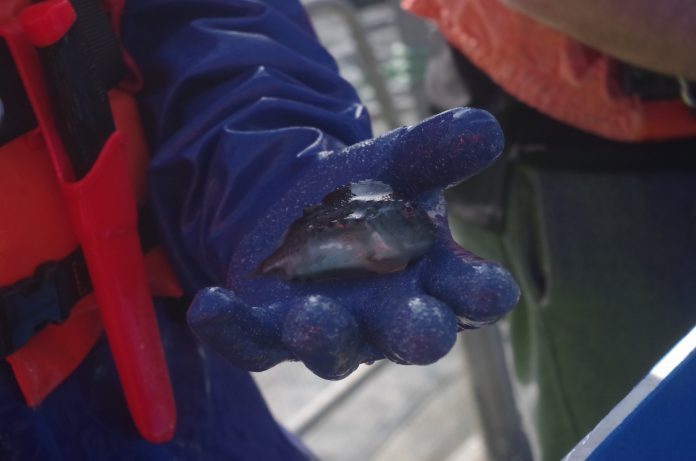The “grandfather of lumpfish” Professor Albert K. D. Imsland on how his study on fish behaviour shows that their appetite for sea lice can be dramatically improved with a few simple steps.
Since 2010, University of Bergen’s Professor Imsland has been researching experience in fish growth and development, reproduction of the humble lumpfish – which are single-handedly driving the industry’s need for effective sea lice control as it moves away from chemical use.
40 and 60 million
“We started the first development in Norway back in 2011, there was 10,000 fish were being produced – now it’s between 40 and 60 million,” said Imsland in a call to SalmonBusiness.

Alongside academics Nina Frogg, Sigurd O. Stefansson, Patrick Reynolds, Imsland recently produced a study entitled “Improving sea lice grazing of lumpfish (Cyclopterus lumpus L.) by feeding live feeds prior to transfer to Atlantic salmon (Salmo salar L.) net-pens”.
Fish efficiency
With their tests, Imsland and co concluded that lumpfish exposed to live prey and frozen sea lice prior to transfer to sea pens with salmon have the ability to learn and recognize this prey after transfer to sea-pens, which can seriously alter the fish`s efficiency in delousing salmon.
“It was a straightforward experiment, “ he said. “On one side, we had fish fed with marine pelleted feed and produced in the traditional way. And on the other site – we had another group fed with dry feed but on top of that live adult Artemia and frozen sea lice (both species of sea lice- Lepeophtheirus salmonis and Caligus elongatus).
The study monitored these two groups how they then grazed on sea lice when introduced to sea pens. “We found differences,” said Imsland.
According to the study, the lumpfish that were weaned with live feed for 100 days were much more productive. “They knew what to graze on – they are more aggressive on the sea lice.”
What they discovered was significant – the lumpfish fed with live feed along with dry feed were improved at an alarming rate.
Improve grazing
“It’s quite striking, you are possibly talking about reducing sea lice between 30 and 50 per cent – with something as simple as amending the fish prior to introducing them into the sea pens,” he said.
“My hope is that this will be spotted by the industry – that they will use this to improve grazing. The problem is that we are still dealing with a wild fish – they are more or less produced from wild parents – so we haven’t improved anything we are just using the wild fish as it comes – in Norway there are projects looking at breeding programs – so looking at ways to improve through breeding,” he said.
How far can performance be pushed?
“When we started in 2010, we saw 6 out of 10 fish were not eating any lice at all, so there is tremendous potential to enhance that. If you can get all the lumpfish to eat sea lice – which is not the situation now – we are working with a wild fish. We haven’t changed anything or enhanced it. This experiment shows that it’s highly simple to make a huge impact,” he concluded.

